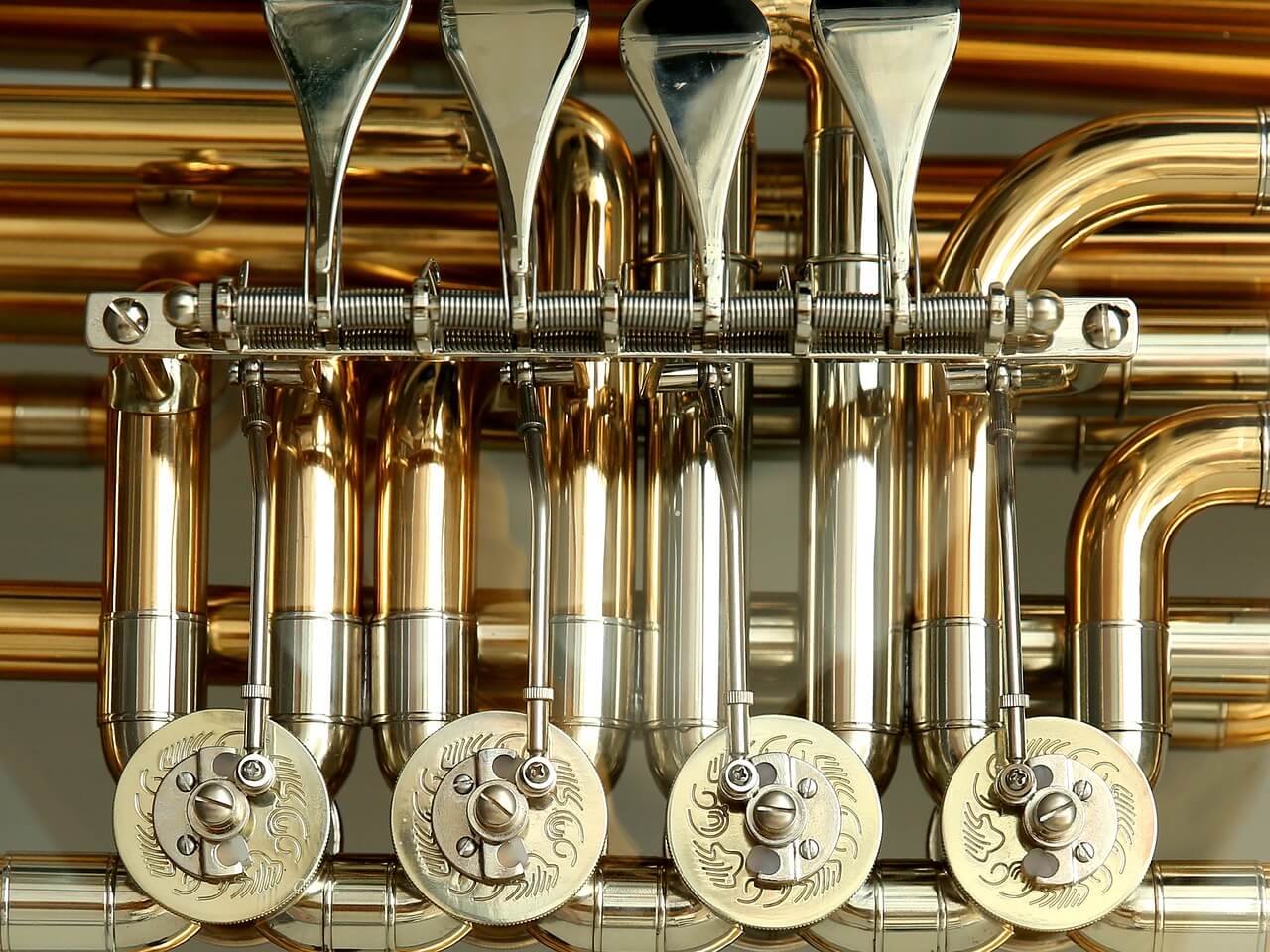John Ericson, of HornMatters.com recently visited the shop of Patterson Hornworks in Las Crusces, New Mexico, and posted a short blog article about his visit.
If you’ve never been inside the shop of an active brass instrument maker (or good repair shop), this article is worth checking out for the pictures alone. It’s incredible to me what these craftspeople are able to make out of simple metal tubes and solder!
While I’ve never been to Patterson’s shop (although I hope to sometime), I have been inside the shop of a couple of other horn makers, and it’s always interesting how they have set up their environments and what sort of tools they use.
Horn Workshops
I never met the legendary horn maker Carl Geyer (he died about a decade before I was born!), but reading stories about his shop on Tom Bacon’s HornPlanet and his IHS biography really brings his talent to life.
I remember discussing him for quite awhile when I was having one of my horn’s worked on by Paul Navarro. Paul is a great repairman and horn maker in his own right, as well as a fantastic player and teacher. Paul mentioned that while Geyer was famous for making horns that fit the player (a real custom horn), Geyer was not, himself, a horn player. He also didn’t use any of the state-of-the-art tooling that was coming into fashion in the 50’s and 60’s. Tom talks about him measuring tapers and bends with only a piece of string and his eyes!
I don’t know how Carl Geyer was able to achieve this pairing of horn and player on such a consistent basis without being a strong player himself, but I’ve heard this kind of story repeated from numerous sources, so I don’t doubt it’s truthfulness.
This also explains why some people who have bought used Geyer horns have loved them and some people do not. If you play similarly to whoever Carl made the horn for, then the instrument probably works well for you. If you play differently than the original owner, then it probably wouldn’t work well at all.
Carl’s genius with horn design does make me wonder, though, about the current wave of “custom” horns that has been happening for the past 10-15 years, and an annoyance I have with them.
The “Custom” Horn
First things first:
Many of these horns aren’t custom, they are handmade.
There are a few makers out there who seem to make a custom instrument, but most do not. Each horn maker will have their own tapers for important horn parts, like the leadpipe and branches, but many parts (valve cluster, bell tail and flare, cylindrical tubing) are the same (or incredibly similar) from maker to maker.

Custom horns do exist, though, like this double-belled monstrosity. 
Created by Gottfriend Buchel for Christine Chapman.
Don’t get me wrong, all the custom handmade horns that I’ve seen or played have been incredibly well-made works of art that are, for the right person, worth the cost.
However, it seems like a bit of dishonesty to call these horns “custom” when some makers won’t even consider alterations by a player that has already bought and paid for their instrument
I think this trend may be changing, as more small horn makers enter the scene. The good ones will (hopefully) continue, and the others will close up shop if they aren’t willing and able to adapt to the customer’s needs.
If you’re in the market for a new horn, and you’re looking into getting an instrument from a small maker, find out their stance on modifications after you receive the horn.







